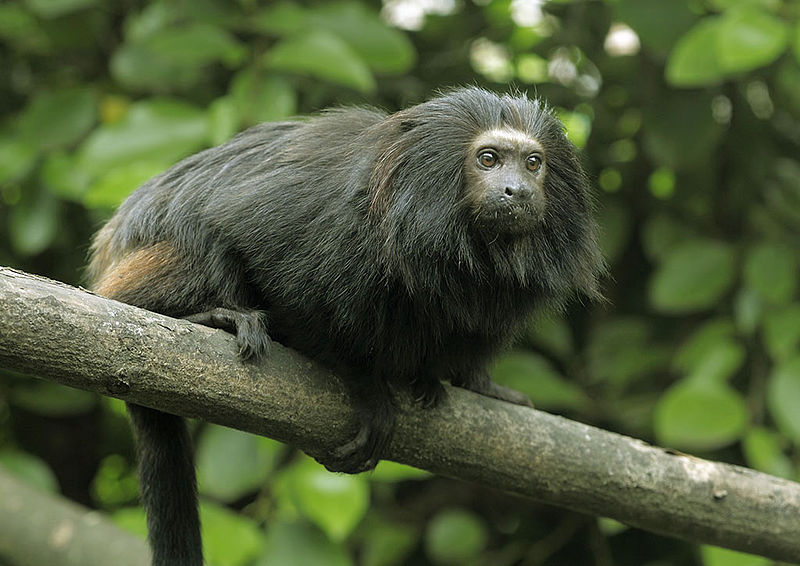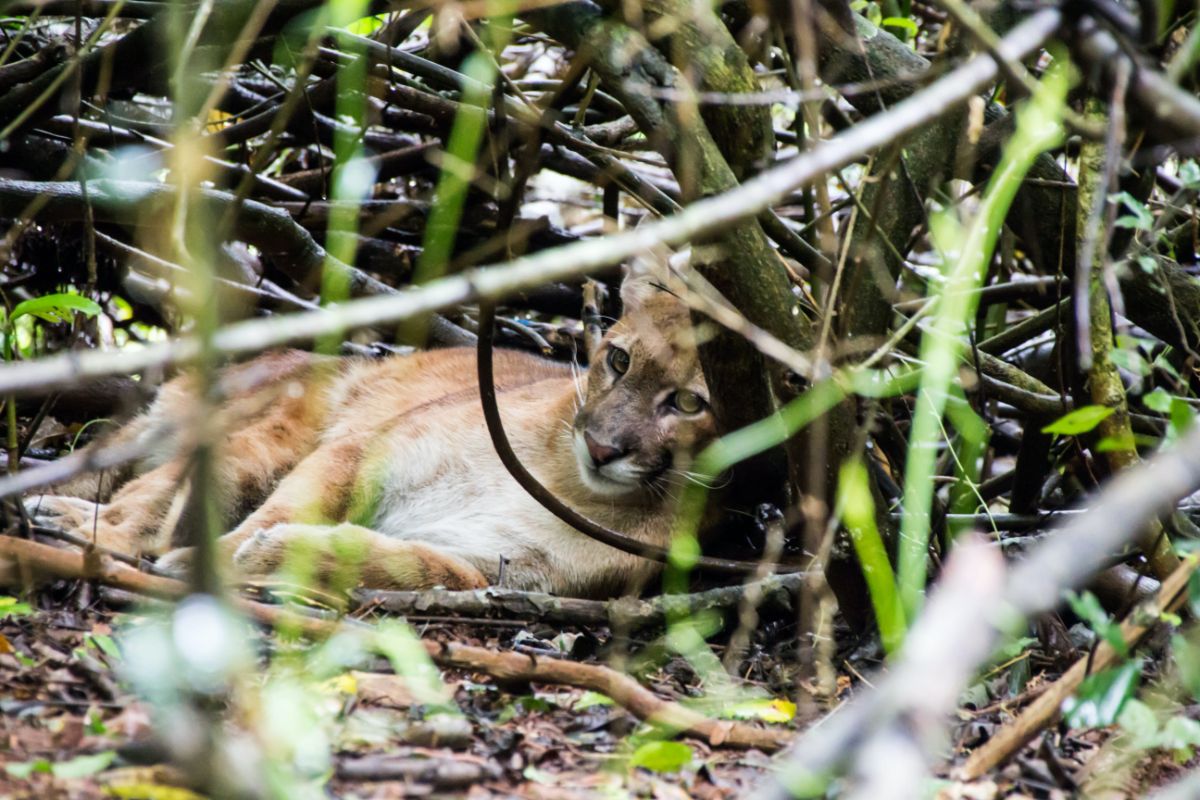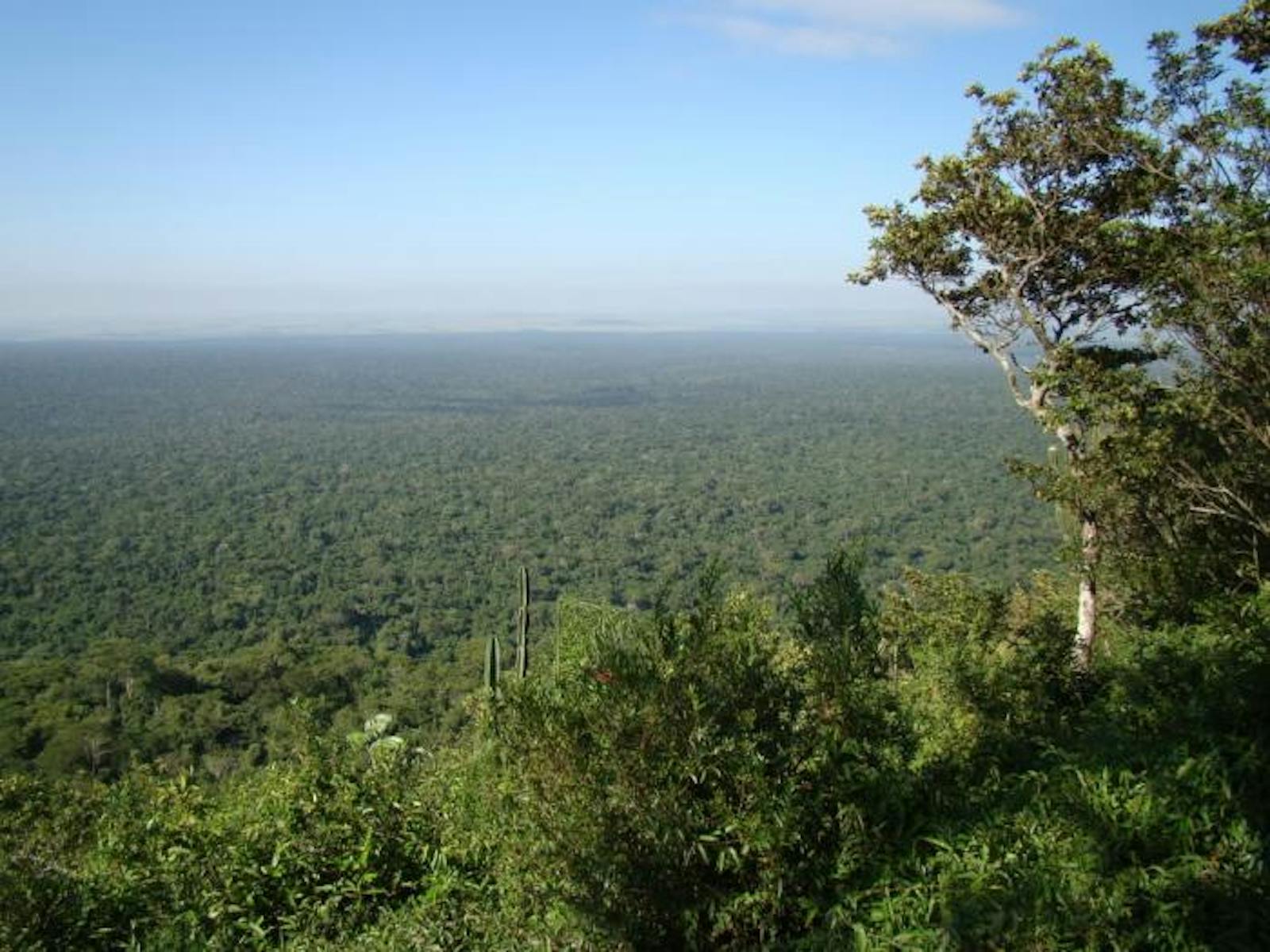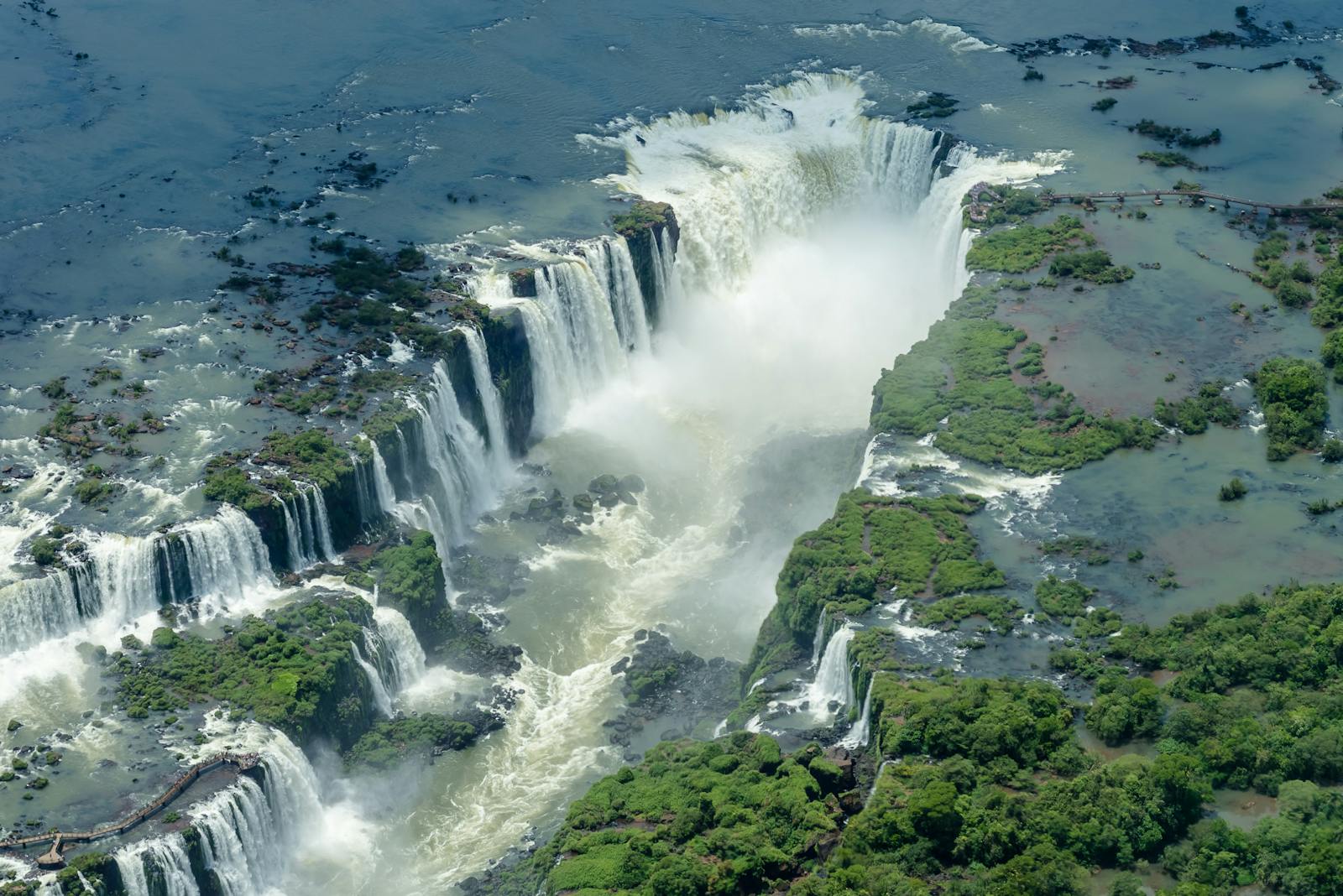Alto Paraná Atlantic Forests
The ecoregion’s land area is provided in units of 1,000 hectares. The conservation target is the Global Safety Net (GSN1) area for the given ecoregion. The protection level indicates the percentage of the GSN goal that is currently protected on a scale of 0-10. N/A means data is not available at this time.
Bioregion: Brazilian Atlantic Moist Forests (NT14)
Realm: Southern America
Ecoregion Size (1000 ha):
48,509
Ecoregion ID:
439
Conservation Target:
21%
Protection Level:
3
States: Brazil, Paraguay, Argentina
Endemic to the Alto Paraná Atlantic Forests ecoregion, the black lion tamarin has only retained a tiny portion of its original range across the state of São Paulo. The globally remaining 1,000 matured individuals of this species are scattered here in 11 isolated subpopulations, only one of which is considered viable in the long term (Morro do Diabo State Park, Brazil). As with most arboreal primates, tamarin species only thrive in areas with continuous canopy, so roads and gaps between forests obstruct their movement and dispersal. The recovery of the endangered black lion tamarin will require continued protection of their habitat and active conservation effort such as reintroductions.
The Alto Paraná Atlantic Forests represent a large block of Atlantic semi-deciduous forest spread from Southeast Brazil and Paraguay to northern Argentina. The climate is subtropical with annual precipitation between 1,200 and 1,600 mm. In the dry season, from April through September, frosts frequently occur. The ancient plateaus and slopes of the Brazilian Plateau occupy this portion of Brazil. Soils throughout the ecoregion range from the fertile latosols to the impoverished podzols. Forests spread from river plains to middle-level plateaus that rise to 800 m above sea level.

The flagship species of the Alto Paraná Atlantic Forests ecoregion is the black lion tamarin. Image credit: Creative Commons
The main vegetation type of this ecoregion is Atlantic semi-deciduous forest, with emergent trees reaching 35 m tall. Canopy layers are populated largely by tree species of the families Lauraceae, Apocynaceae, and Leguminosae. Gallery forests and flooded grasslands are also found bordering the ecoregion’s larger rivers. Richness of plant and animal species that characterizes semi-deciduous forests sets this ecoregion apart from other portions of the Brazilian Atlantic forest. In the Brazilian State of São Paulo alone, at least 662 woody plant species have been described.
From an evolutionary point of view, Alto Paraná Atlantic Forests have played a key role as corridors for species migration between moist and semi-deciduous forests and between Atlantic forests and Cerrado habitats. This ecoregion straddles two Endemic Bird Areas, which it shares with neighboring ecoregions, the Atlantic Forest mountains and Atlantic Forest lowlands. Among the regional endemic birds are the striolated tit-spinetail and black-capped manakin. Mammals of note include the black lion tamarin, the brown howler monkey, and ocelot.
Alto Paraná Atlantic Forests have been reduced in area by over 95% in Brazil. There are a few large blocks of forest left in public protected areas. In the Iguaçu, Ilha Grande and Itatiaia National Parks are areas of strict-use federally protected land. The dominant scenery in of this region in Brazil is small forest remnants ranging from 0.01–1 km2 surrounded by a matrix of pastures and agriculture. In Argentina a larger portion has been conserved forming a contiguous corridor covering a large part of the province of Misiones. Paraguay continues to retain a large area of the ecoregion; however, deforestation rates have increased fragmentation.

South American cougar. Image credit: Creative Commons
The Alto Paraná Atlantic Forests ecoregion has suffered from human actions such as overexploitation, clearing of land for agriculture, and burning of biomass, with profound impacts upon terrestrial and aquatic ecosystems—including the loss of biodiversity and the degradation of soil and water quality of small and large international rivers. Timber extraction, agriculture, and hunting represent continuous threats to the biodiversity the Alto Paraná Atlantic Forests. Such activities will increase the pressure on timber trees, game species, and large carnivores.
The priority conservation actions for the next decade will be to: 1) strengthen the administration and buffer zones of national parks in the ecoregion; 2) regulate the timber industry to decrease deforestation rates; and 3) foster community natural resource management integration into agriculture practices.
Citations
1. Silva, J. 2018. Southern Brazil, eastern Paraguay, and easternmost Argentina. https://www.worldwildlife.org/ecoregions/nt0150 Accessed July 31, 2018.
2. Viana, V. M., A. J. Tabanez, and J.L. Batista. 1997. Dynamics and restoration of forest fragments in the Brazilian Atlantic moist forest. Pages 351-365 in W.F. Laurance, R.O. Bierregaard Jr (editors), Tropical forest remnants: ecology, management, and conservation of fragmented communities. University of Chicago Press, Chicago.
3. Rodrigues, R.R. and G.J. Shepherd. 1992. Análise da variação estrutural e fisionômica da vegetação e características edáficas, num gradiente altitudinal na Serra do Japi. Pages 64-96 in: L.P.C. Morellato (org.), História Natural da Serra do Japi: Ecologia e preservação de uma área florestal no Sudeste do Brasil. Editora da UNICAMP, Campinas.
4. Kierulff, M.C.M., Rylands, A.B., Mendes. S.L. & de Oliveira, M.M. 2008. Leontopithecus chrysopygus. The IUCN Red List of Threatened Species 2008: e.T11505A3290864. http://dx.doi.org/10.2305/IUCN.UK.2008.RLTS.T11505A3290864.en. Accessed July 31, 2018.




